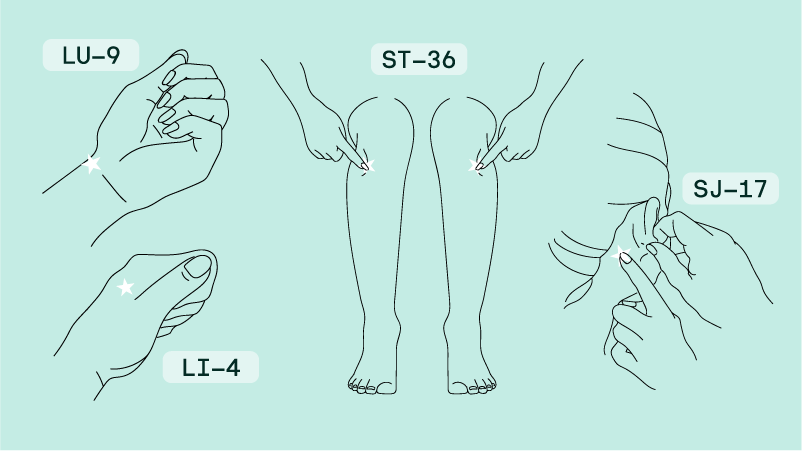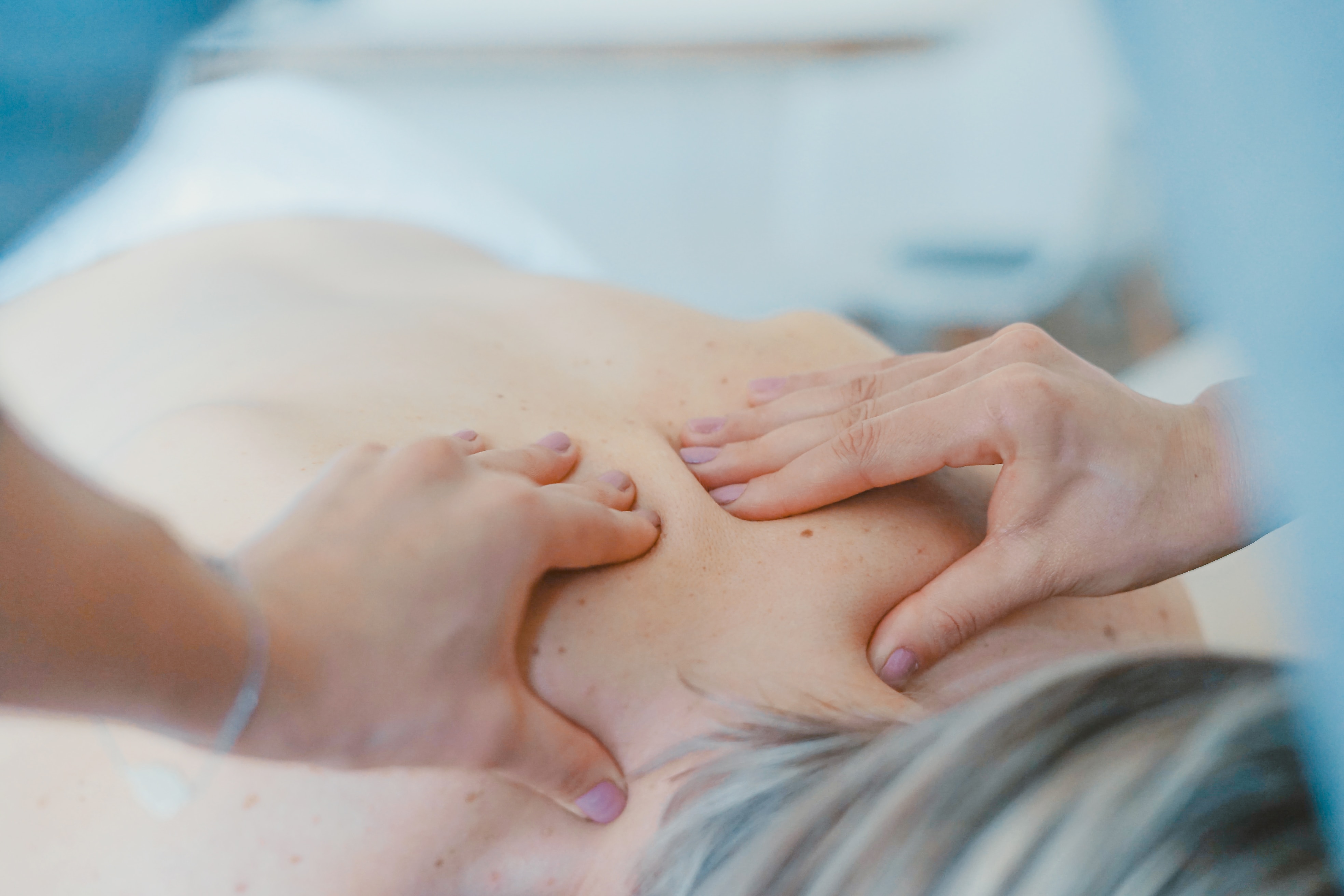Sometimes, all the triptans, cold compresses, and coffee in the world don’t seem to be enough to relieve your migraine pain. If that sounds familiar, you might want to learn a bit about acupressure. It’s a natural, relatively safe method of pain relief for you to try.
But first things first: What is it?
Acupressure 101
You may’ve heard people raving about the benefits of acupuncture treatment for all kinds of health issues, from back pain to chronic migraine headaches, but did you know that acupressure works the same way—without all those scary needles?
Like acupuncture, acupressure is an alternative medicine technique based on the traditional Chinese concept of Qi, life energy that flows through the body in pathways called meridians. This tradition attributes various ailments and illnesses to blockages in the flow of Qi. The purpose of acupuncture and acupressure is to clear those blockages and return your body to its natural state.
But what is acupressure specifically? Well, a lot like a massage. It involves applying pressure to specific parts of the body called acupressure points (or acupoints for short). Which points you focus on depends on what kind of pain you’re trying to treat, which brings us to our next section.
How can it help relieve migraine pain?
Acupressure is said to be helpful for people dealing with depression, anxiety, nausea, chemotherapy side effects, and many other conditions. The idea is that any physical or emotional pain can be partly relieved by acupressure, so it almost goes without saying that it can be useful for migraine sufferers—especially when you consider that it’s free, usually safe for most people, and simple enough that you might even be able to perform it on yourself during an attack.
What’s the science behind it?
We should mention that the scientific evidence for the effectiveness of acupressure is pretty much inconclusive. A 2011 review published in the Journal of Pain and Symptom Management noted that 35 out of 43 studies found that acupressure did alleviate symptoms of various illnesses, but that many of those studies may have been biased. More research will likely be needed before scientists can decide if the benefits of acupressure are the real deal or just another example of the placebo effect.
Scientific studies aside, there’s a lot of anecdotal evidence in favor of acupressure. Since it doesn’t come with any negative side effects, giving it a try is relatively risk-free.
When is acupressure most effective for migraine?
Acupressure is intended to provide immediate relief, so you can try it during a migraine attack. Can’t imagine being able to remember pressure points while in the throes of an attack? Yeah, we get it. Luckily, someone else can do it for you without reducing its effects if you show them how.
How exactly do you use pressure points to relieve migraine?
Good news if you want to try this out, it’s very easy. All it involves is getting comfortable, closing your eyes, and massaging the pressure point in a circular motion for 15 to 20 seconds. You should use firm pressure, but don’t press so hard that it’s painful. (That makes it a great option for those never-ending minutes before your acute medication kicks in.)
How do you know which pressure points to target?
For migraine relief, the most important pressure point to know to relieve headache pain is the space between the base of your thumb and your index finger. For those who want to be acupressure experts, it’s called LI-4 (a.k.a. Hegu).
Other potentially useful points include your inner wrist, on the same side as your thumb (LU-9), and the back of your jawbone, just below your ear (SJ-17).
If your migraine attacks come with nausea, you could also try the depression between your leg muscles and shin bones, right below your kneecaps (ST-36).
Take a look at our handy reference guide below if you’re having trouble finding them.

Who shouldn’t use acupressure?
Wondering if this is risky to try? Rest assured that acupressure is a relatively safe way to alleviate pain, and it can typically be used many times a day without causing any harm.
But that doesn’t mean you shouldn’t still be careful. Don’t put pressure on any areas where you have burns, infections, contagious skin diseases, or active cancer.
Pregnant women should consult with a doctor before using acupressure because some points are believed to induce contractions. People with joint diseases like rheumatoid arthritis should also talk to their healthcare provider before trying acupressure.
To wrap all this up, acupressure is a natural, easy, and relatively safe method for pain relief, but it shouldn’t be your primary treatment for any serious conditions or illnesses, including migraine. Many sufferers control migraine by combining alternative treatments and prescription medication.
If you'd like to work with a doctor who specializes in migraine to find the right treatment for you, we can connect you with a Cove doctor today.
The information provided in this article is not a substitute for professional medical advice, diagnosis, or treatment. You should not rely upon the content provided in this article for specific medical advice. If you have any questions or concerns, please talk to your doctor.
Photo by Toa Heftiba on Unsplash.


